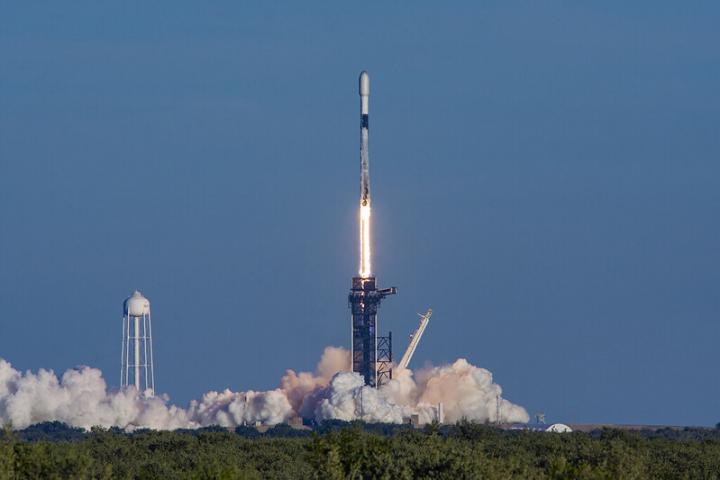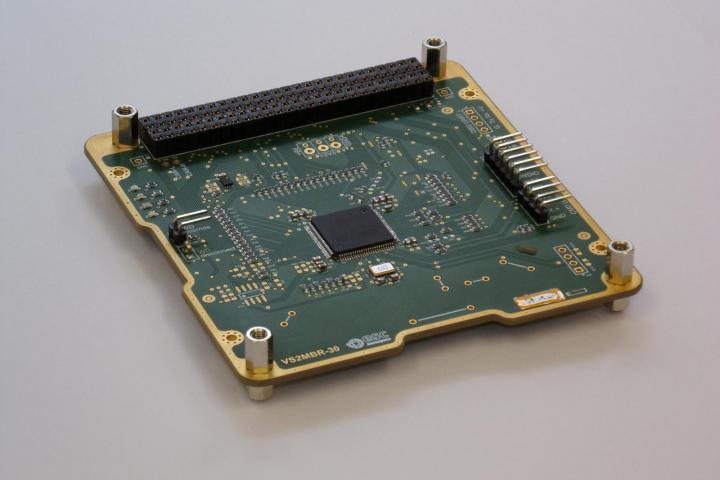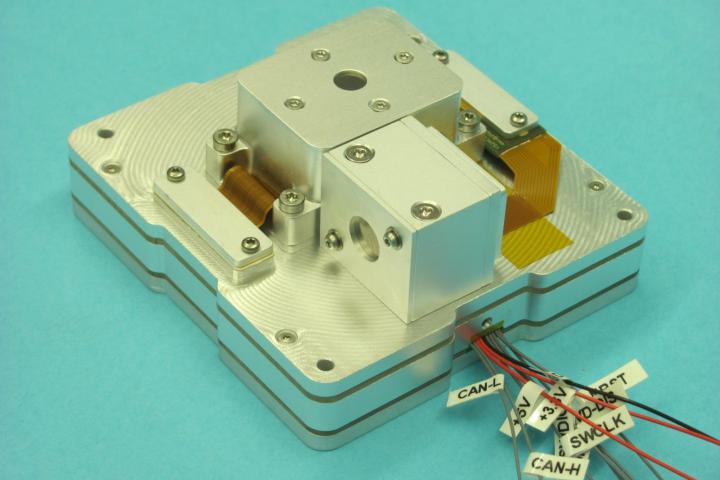
"This is the second generation of our detector. The first one was launched into orbit by a Russian Soyuz rocket on 5 July 2019. The second detector does a bit more than that, because in addition to measuring the number of particles and identifying them individually, it can also determine their direction of flight and their energy. The device also includes a second detector for detecting photons of so-called soft X-rays," says Michal Marčišovský from the department and head of the Centre for Applied Physics and Advanced Detection Systems (CAPADS) laboratory, which is developing the detectors. "However, the first detector is still operational and the data from it will help us get a better picture of space weather and ionising radiation in orbit, which is the main goal of our work," adds Michal Marčišovský.
The new generation of the detector will also focus on the study of space weather and ionising radiation in orbit. This will help protect space infrastructure and human crew from cosmic radiation. By detecting dangerous levels of radiation early on that could damage equipment or endanger astronauts, measures can be taken to limit the risks - for example, the satellite can be rotated to expose its most protected part to radiation, or sensitive equipment can be turned off for a given time. The data from our detector will make it possible to protect very expensive instruments and thus substantially extend their lifetime. It is therefore to be expected that this data will be of interest to the operators of orbiting facilities.
The first FNSPE detectors in space are primarily used to verify their functionality in the space environment and for cross-calibration with existing data. CAPADS scientists have used their experience in design, operation and data acquisition to further improve the parameters and develop a more advanced detector called the SpacepiX Radiation Monitor (SXRM). This still retains the minimum size, weight and electrical power - variables that are extremely valuable for orbiting devices - and allows much more detailed radiation field data to be obtained than existing comparable detection technologies. In fact, instead of having a single detection chip to track the passage of particles, it has five, so that it can determine not only the number and type of particles, but also their energy and direction of approach.
The SXRM detector (part of the 2SD device) is based on the revolutionary SpacePix2 monolithic pixel detector developed by the faculty. It is designed to operate for at least 15 years in a variety of Earth orbit environments. The small size and low power requirements allow the detector to be easily placed on almost any satellite. In fact, the more detectors in orbit that monitor the space environment, the more accurately the space environment can be modelled.
In addition to the SXRM detector, the SXM detector (Soft X-ray Monitor, also part of the 2SD) has been launched into orbit to measure the flux of soft X-ray photons, which are most often emitted during solar flares. These eruptions can cause so-called solar storms, which have the potential to damage not only sensitive electronic equipment in orbit, but also entire power grids on the Earth's surface in a major event. An example of their weaker impact on the Earth's surface is the aurora borealis at lower latitudes. Although the cost of putting equipment into space has plummeted in the last 20 years, it is still relatively high. But the cost of the devices themselves in orbit is even higher. On top of that, the number of these devices is growing very rapidly, creating the problem of many non-functioning devices becoming space junk that endangers other devices. FJFI detectors have the potential to extend the lifetime of electronics and thus reduce the amount of space debris in orbit.
VZLUSAT2 is a Czech technological nanosatellite constructed at the Aerospace Research and Test Institute (VZLÚ) and its mission objective is to validate technologies for later missions of the upcoming Czech satellite constellation.
CubeSat VZLUSAT-2 is the second space mission involving scientists from the Centre for Applied Physics and Advanced Detection Systems (CAPADS) at FNSPE. The centre specialises in research and development in the field of complex radiation-hardened microelectronic circuits and sensors and offers collaboration to commercial and academic entities.
Photo, courtesy of: esc Aerospace, the rocket photo courtesy of: Space X

